
Text and photographs copyright 2016 James Angus. Design and concept copyright 2016 Ulysses Press and its licensors. All rights reserved. Any unauthorized duplication in whole or in part or dissemination of this edition by any means (including but not limited to photocopying, electronic devices, digital versions, and the Internet) will be prosecuted to the fullest extent of the law. Published in the United States by Ulysses Press P.O. Box 3440 Berkeley, CA 94703 www.ulyssespress.com ISBN: 978-1-61243-620-3 Library of Congress Control Number: 2016934489 10 9 8 7 6 5 4 3 2 1 Acquisitions Editor: Casie Vogel Managing Editor: Claire Chun Editor: Renee Rutledge Proofreader: Kate St.
Clair Front cover design: Michelle Thompson Interior design: what!design @ whatweb.com Layout: Jake Flaherty Distributed by Publishers Group West IMPORTANT NOTE TO READERS: This book is independently authored and published and no sponsorship or endorsement of this book by, and no affiliation with, any trademarked brands or other trademarked brands or products mentioned within is claimed or suggested. All trademarks that appear in this book belong to their respective owners and are used here for informational purposes only. The authors and publisher encourage readers to patronize the quality brands and products mentioned in this book. For my mother, Sheryl. Look, Mom, I wrote a book. Table of Contents
Guide
CONTENTS I have never been one of those people who would let a lack of funds stop them from getting the look they want. In my line of work, retail creative services, I have to be extremely resourceful.
Theres just no other way. Because I have to create manor house interiors in store windows for only a few hundred dollars, Ive learned to paint faux limestone, sew pillows with a stapler, and electrify vintage light fixtures. (Vintage usually means they came from a trash heap in front of an old house.) Nothing is ever thrown away. Everything can always be spray painted, retrofitted, or reconstructed to fit some future installation. I definitely take that philosophy home with me. Every apartment and house I have lived in over the past 20 years has been left much improved for the next inhabitant.
I do so much more than simply paint the walls, trim, and ceilings. (Always paint your ceilings a fresh white. It makes the biggest differencetrust me.) Ive removed nasty carpeting and refinished the hardwood floors underneath, installed my own recessed lighting, laid tile floors, hung new ceiling fans, brushed chrome switch plate covers, and even lined an entire set of kitchen drawers with cork. In my last place, half of a 1930s Tudor cottage on the famed Dallas M streets, my brother and I replaced the cheap big boxstore bathroom sink with a higher end vintage pedestal sink (rescued from another junk pile), and my partner Jamie and I dismantled the dilapidated screened-in porch and rebuilt it from the ground up. I even made shutters and window boxes from cedar scraps for all the windows. On a rental.
Then I bought my first house. (Cue the sound of angels trumpeting.) Now there really were no limits. In just six years, Ive torn down walls, covered over unnecessary doors, refloored, completely replaced the electrical panel and every light fixture, constructed a wood accent wall, updated a very outdated kitchen, clad the garage interior with cedar planks, hung factory-style pendants, built a horizontal slat fence and a 300-square-foot deck, installed lights under the eaves, re-landscaped, and (hopefully, by the time this book is published) completely gutted and remodeled the master bathroom. Did I say there were no limits? Because there is always that one limitation: money. Most everything Ive done has been on a shoestring budget. So how does all that lead to plumbing pipe? I knew youd ask.
About 15 years ago, at one of my favorite pizza joints, I noticed that the logs for the wood-burning oven were contained with industrial pipe towers attached to the walls. I was immediately smitten and wanted to try the same thing in my rental, even though I didnt have a working fireplaceor even the empty wall space. But I never stopped thinking about it. My current house has a working fireplace and room for wood storage. A little online research led me to a rolling log holder at a fancy decor store that I could never afford, and a light turned on in my head. I combined those two inspirations in my garage and a day later, had a rolling log holder made from humble industrial plumbing pipe and scrap 2 4s.
It was a fraction of the cost of the mail-order piece, movable, and relatively easy to make. I posted a few pictures online, with some basic directions, and it took off like wildfire. Not only were people making their own versions (I know because they sent me pictures of their finished projects), they were also asking if I would make them to sell. As if I had the free time. From there I was constantly on the lookout for new ways to use plumbing pipe. We needed curtain rods.
Why not use pipe, with drop cloth curtains? Everyone online was making shelving units from pipes. How could I make mine look different? If something made from steel caught my fancy, I duplicated it with pipes. In fact, there isnt a room in our house that doesnt have industrial pipe in it in some way. And now, with this book, Im passing my projects on to you fine readers. But, please, dont let my humble directions stop you from experimenting on your own. Make yours unique.
Make it fit your needs. Make it with industrial pipe.  Standing at the hardware store looking at a wall of pipes and pipe pieces, you will find yourself wondering, How do I begin? It can be a little intimidating but dont fear. Im here to explain it all to you. GETTING TO KNOW YOUR PIPES Most of the pipe youll find in hardware stores is made of carbon steel. Galvanized silver pipe, traditionally used just for water transport, is coated in zinc to make it more corrosion resistant.
Standing at the hardware store looking at a wall of pipes and pipe pieces, you will find yourself wondering, How do I begin? It can be a little intimidating but dont fear. Im here to explain it all to you. GETTING TO KNOW YOUR PIPES Most of the pipe youll find in hardware stores is made of carbon steel. Galvanized silver pipe, traditionally used just for water transport, is coated in zinc to make it more corrosion resistant.
Black pipes are used for transporting gas and oil, but not water, because they rust easily. This is a good thing to know if you plan to use your finished pipe pieces outside. Silver is better. Unfortunately, because of the zinc coating, silver pipes tend to be a little more expensive. Most new plumbing builds are done with PVC pipe. (Its important to know that diameter refers to the inside distance of the pipe opening. (Its important to know that diameter refers to the inside distance of the pipe opening.
This is a good thing to remember when youre drilling a hole in a board for a pipe. For example; a -inch-diameter pipe will need a hole just slightly larger than 1-inch to fit through.) Your standard neighborhood hardware store will probably only stock an assortment of 4 to 5 of these sizes. The most commonly used pipe diameters are: -inch, -inch, -inch, and 1-inch. Length refers to just that; the length of the pipes and nipples. Most hardware stores will offer a variety of nipples from 1 inch up to 12 inches in length, and pipes up to 8 feet long. Cant find the length you need? Just ask someone to cut it for you.
In this book, most projects will use the same diameter pipes and corresponding fittings for all of its supplies. Each project will tell you what kind of diameter to buy. For example, Use -inch-diameter black pipes and fitting. For the more complicated projects that require pipes and fittings with different diameters, diameter will always be listed first and then followed by length. For example, a project might ask for a 18-inch pipe. The measurement is diameter and the 18-inch measurement is length.


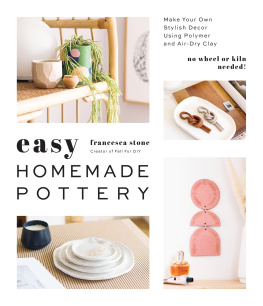
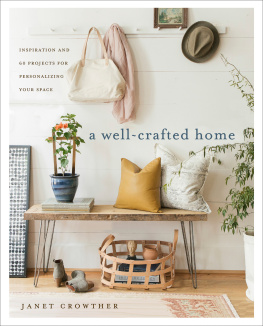
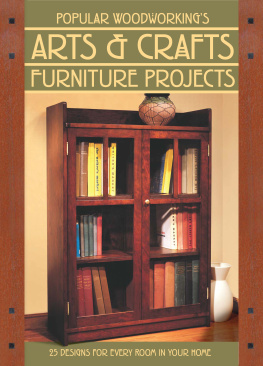
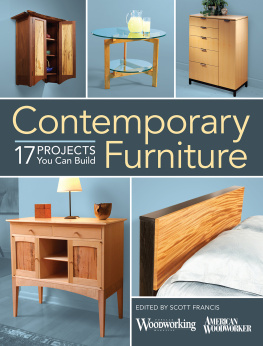
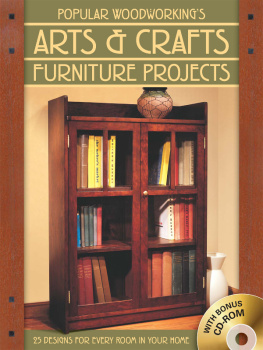
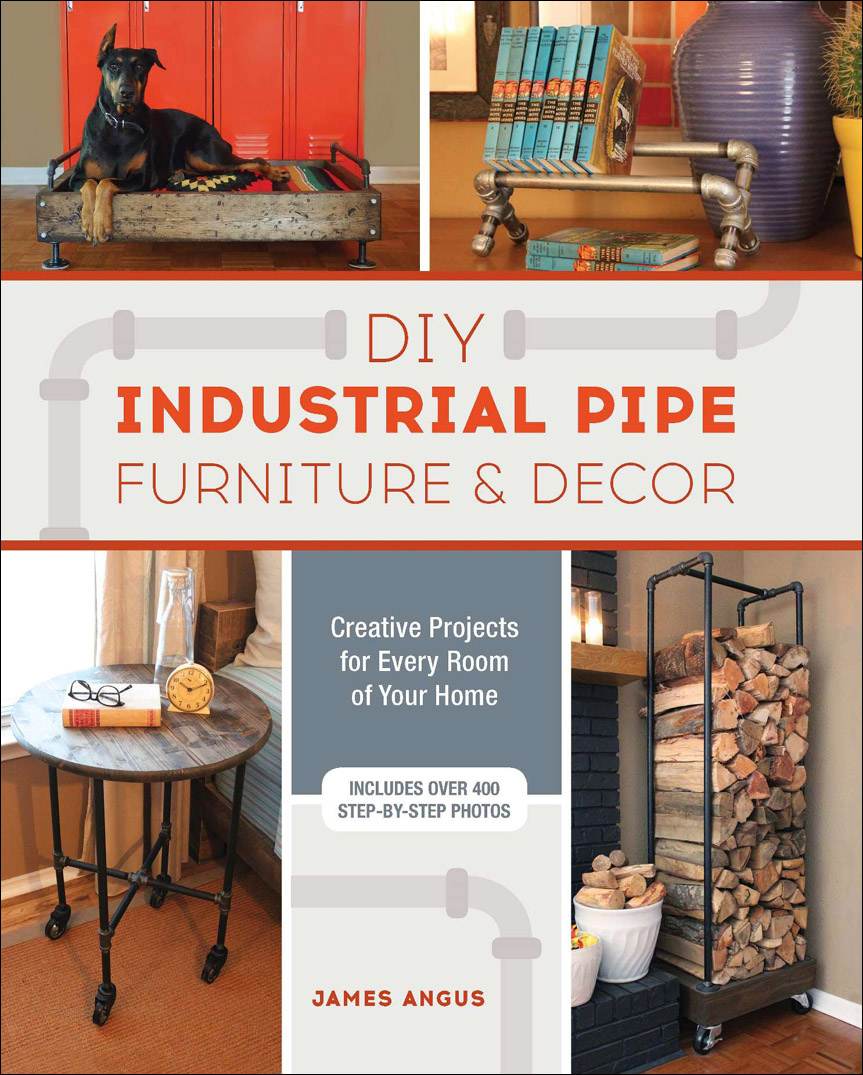
 Text and photographs copyright 2016 James Angus. Design and concept copyright 2016 Ulysses Press and its licensors. All rights reserved. Any unauthorized duplication in whole or in part or dissemination of this edition by any means (including but not limited to photocopying, electronic devices, digital versions, and the Internet) will be prosecuted to the fullest extent of the law. Published in the United States by Ulysses Press P.O. Box 3440 Berkeley, CA 94703 www.ulyssespress.com ISBN: 978-1-61243-620-3 Library of Congress Control Number: 2016934489 10 9 8 7 6 5 4 3 2 1 Acquisitions Editor: Casie Vogel Managing Editor: Claire Chun Editor: Renee Rutledge Proofreader: Kate St.
Text and photographs copyright 2016 James Angus. Design and concept copyright 2016 Ulysses Press and its licensors. All rights reserved. Any unauthorized duplication in whole or in part or dissemination of this edition by any means (including but not limited to photocopying, electronic devices, digital versions, and the Internet) will be prosecuted to the fullest extent of the law. Published in the United States by Ulysses Press P.O. Box 3440 Berkeley, CA 94703 www.ulyssespress.com ISBN: 978-1-61243-620-3 Library of Congress Control Number: 2016934489 10 9 8 7 6 5 4 3 2 1 Acquisitions Editor: Casie Vogel Managing Editor: Claire Chun Editor: Renee Rutledge Proofreader: Kate St.  Standing at the hardware store looking at a wall of pipes and pipe pieces, you will find yourself wondering, How do I begin? It can be a little intimidating but dont fear. Im here to explain it all to you. GETTING TO KNOW YOUR PIPES Most of the pipe youll find in hardware stores is made of carbon steel. Galvanized silver pipe, traditionally used just for water transport, is coated in zinc to make it more corrosion resistant.
Standing at the hardware store looking at a wall of pipes and pipe pieces, you will find yourself wondering, How do I begin? It can be a little intimidating but dont fear. Im here to explain it all to you. GETTING TO KNOW YOUR PIPES Most of the pipe youll find in hardware stores is made of carbon steel. Galvanized silver pipe, traditionally used just for water transport, is coated in zinc to make it more corrosion resistant.